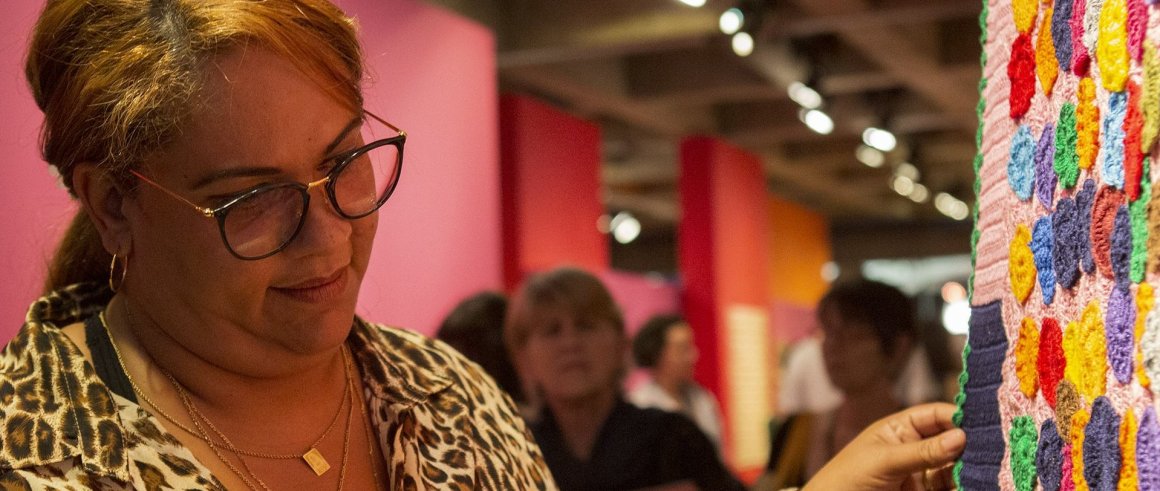“EntreMeadas” exhibition highlights the crochet work of Lili Cooperative, made by the incarcerated women of Tremembé
One of the works in crochet produced by Lili Cooperative – developed by the incarcerated women of Tremembé and supported by Humanitas360 – is being displayed at the “EntreMeadas” exhibition, at Sesc Vila Mariana, in São Paulo, Brazil. The exposition curated by Adélia Borges highlights the production of twenty collectives of craftswomen from the state of São Paulo. Beside Lili’s, many artworks form the exhibition, such as the work of the quilombos Ivaporanduva and Sapatu, of the Aldeia lace makers, and of the craftswomen of Linha Nove, as well as former-housemaid Lucinda Bento’s artworks.
“I came to know the work of Lili Cooperative through the designers Renato Imbroisi and Cristiana Pereira, who collaborated in the development of the collections, and I was charmed”, tells the curator. “They are high-quality works that do not bring to the craftswomen fixed formulas, but intend to extract both theme and artistic expression from their own experiences.”
“It is a great satisfaction to be a part of this and to show this beautiful crochet of the girls in Tremembé. I hope we can grow and make progress with this work”, said Glaucia Celsa Lima, a member of Lili Cooperative who has been released from prison and attended the opening of the Festival. She recalled the workshops Humanitas360 promoted while she was still in prison, in which she learned embroidery techniques previously unknown to her, such as quilting and braiding. “We managed to gather each person’s needs”, remembers Thomaz.
Adélia Borges highlighted the importance of continuing Lili’s work: “I think it has everything it takes in order to be replicated in many Brazilian detention centers, because it respects the inmate, [and it is very interesting] that the income is also reverted to them”, underscoring how difficult it is for the incarcerated population of Brazil to be absorbed by the job market.
Regarding how the government of São Paulo paralyzed the operations of Lili Cooperative, Glaucia Celsa Lima questioned: “when this work starts to deal with artistic matters, [to stimulate] what each inmate has best to offer, such a veto appears”. By the time of the workshops, the participant even refused a semi-open regime in order to continue learning the sewing techniques. “It is a dream for all of us, there are several artists there.”
Amongst the other artworks displayed Luciana Bento’s tapestries stand out. Bento is from São Gonçalo do Sapucaí, in Minas Gerais, and worked as a housekeeper in São Paulo. Since 1981 she has been living in Américo Brasiliense, a municipality near Araraquara. Her work incorporates banana tree fibers, jute, cattails, and cotton. Odete Coradini’s braiding on the other hand uses corn stover in order to reproduce a star-shaped weave, her trademark. EntreMeadas exhibition continues on display until February 9 at Sesc Vila Mariana.
Tradução: Pedro Brener

